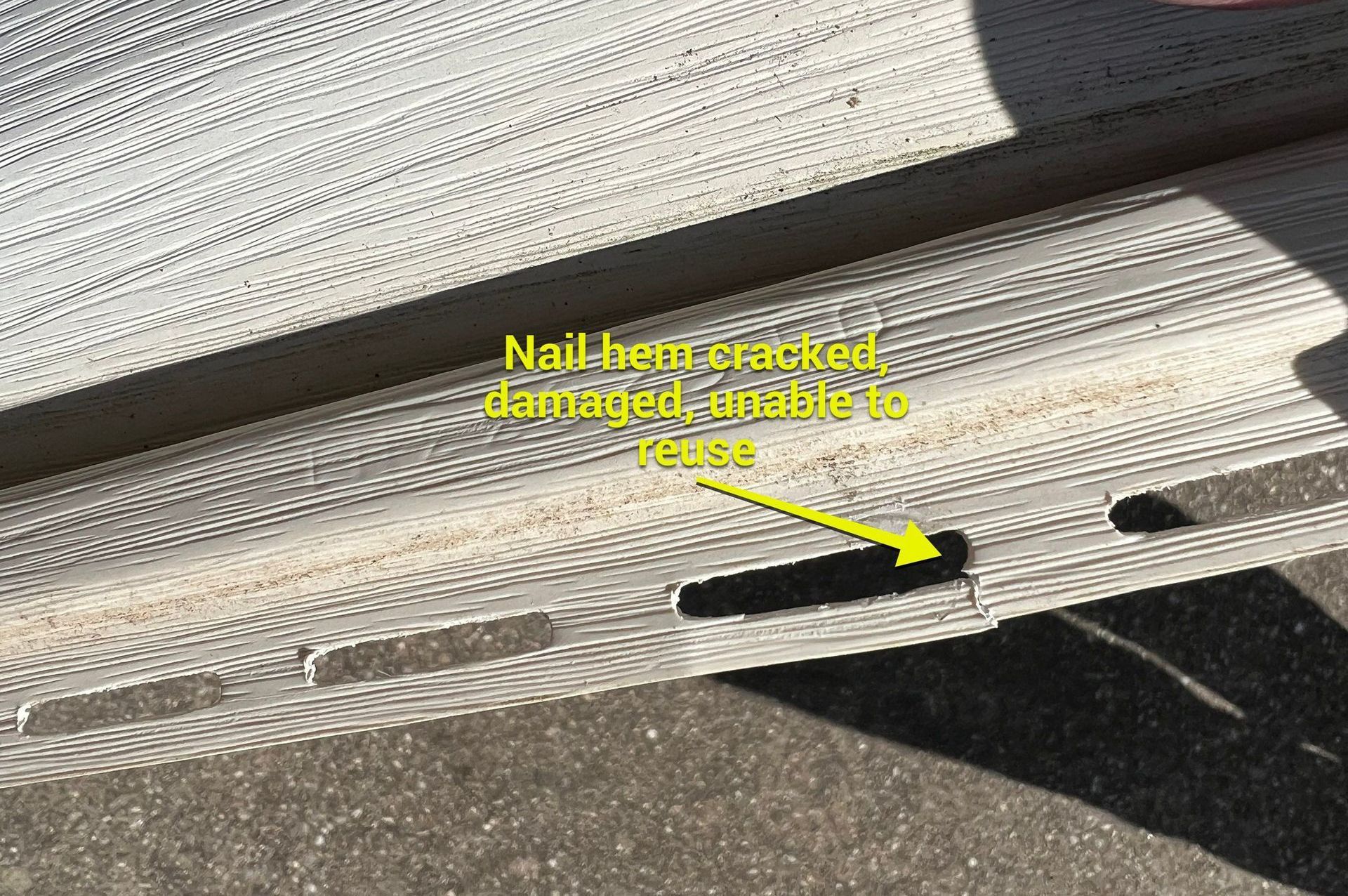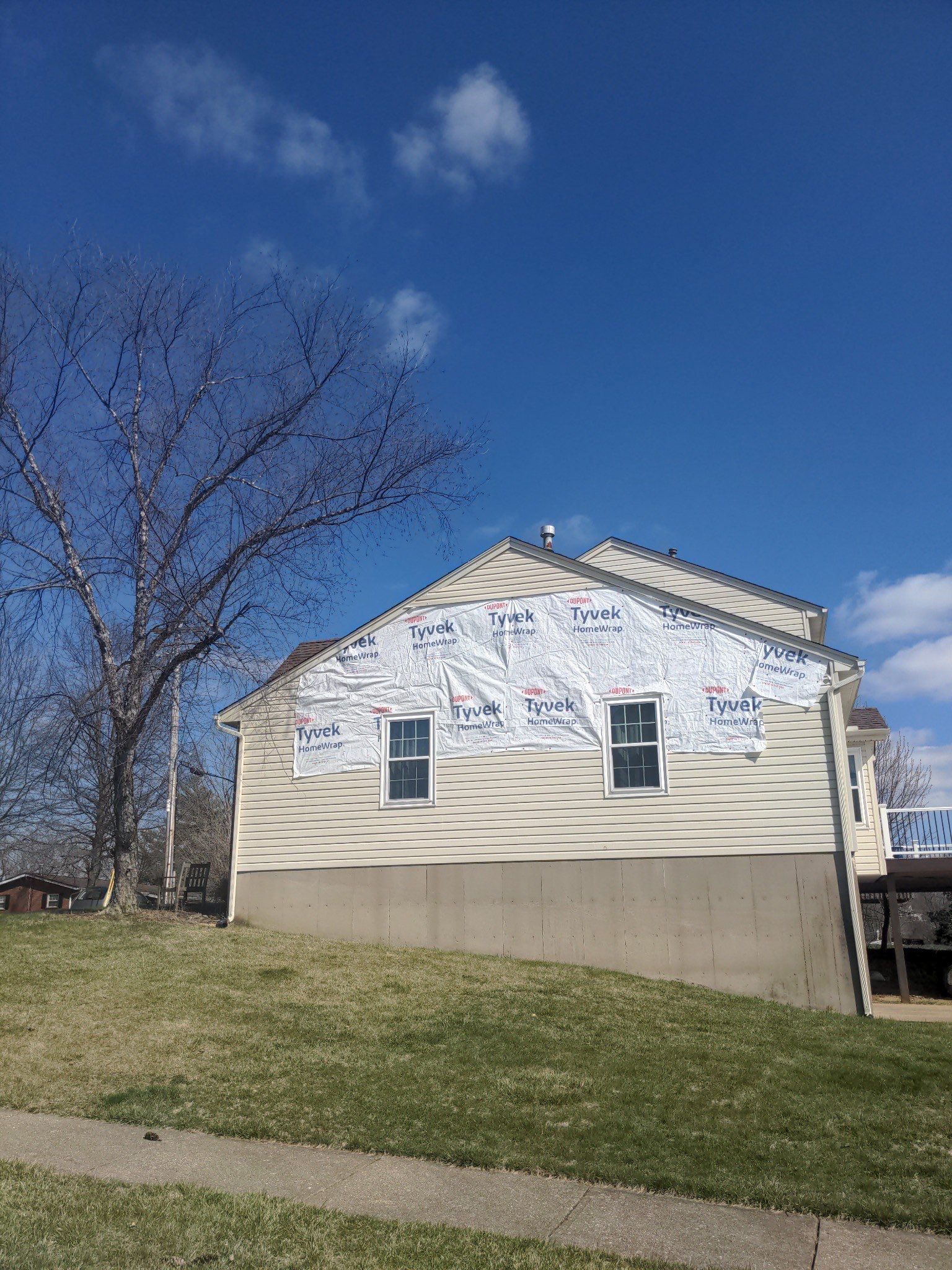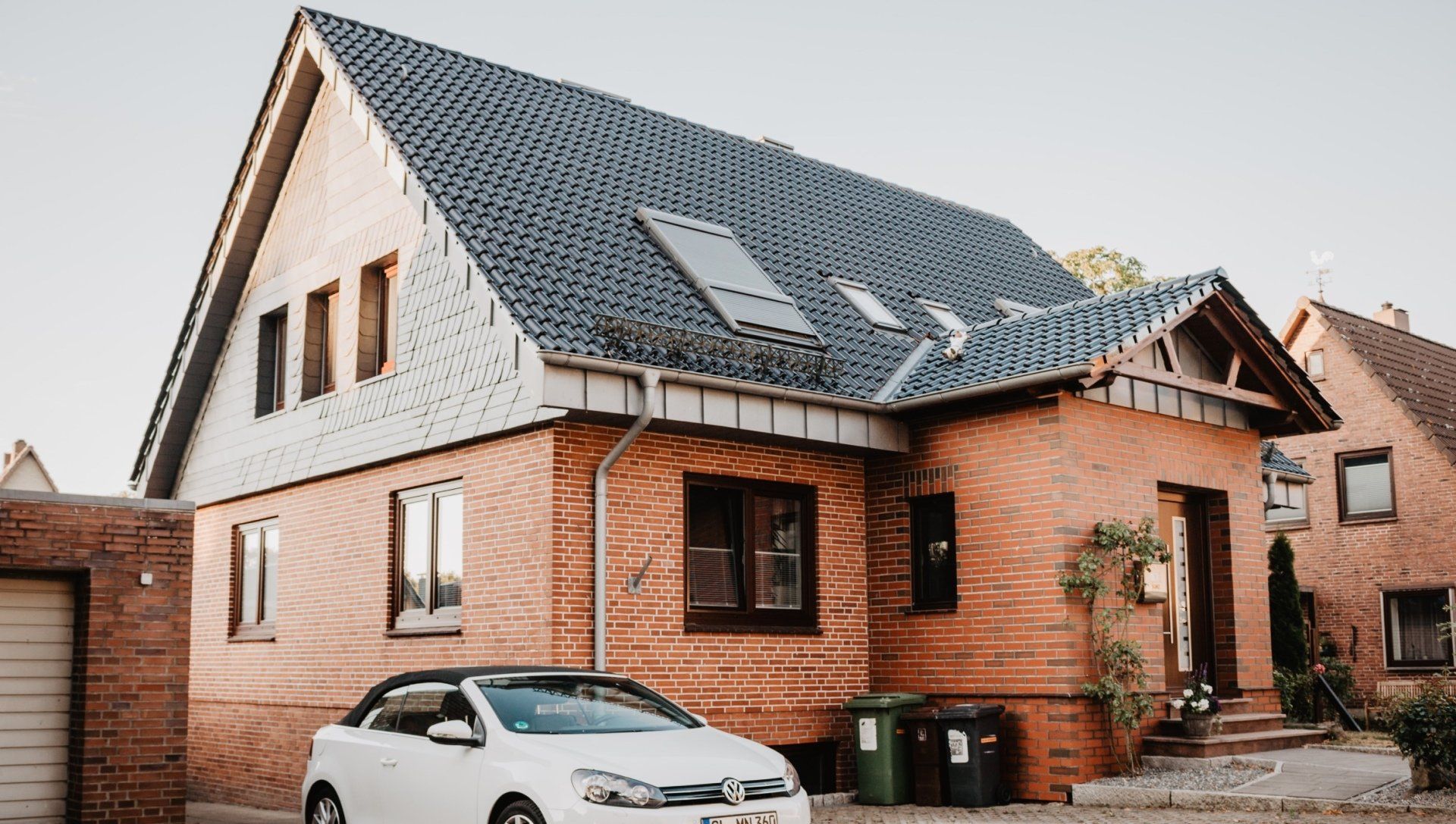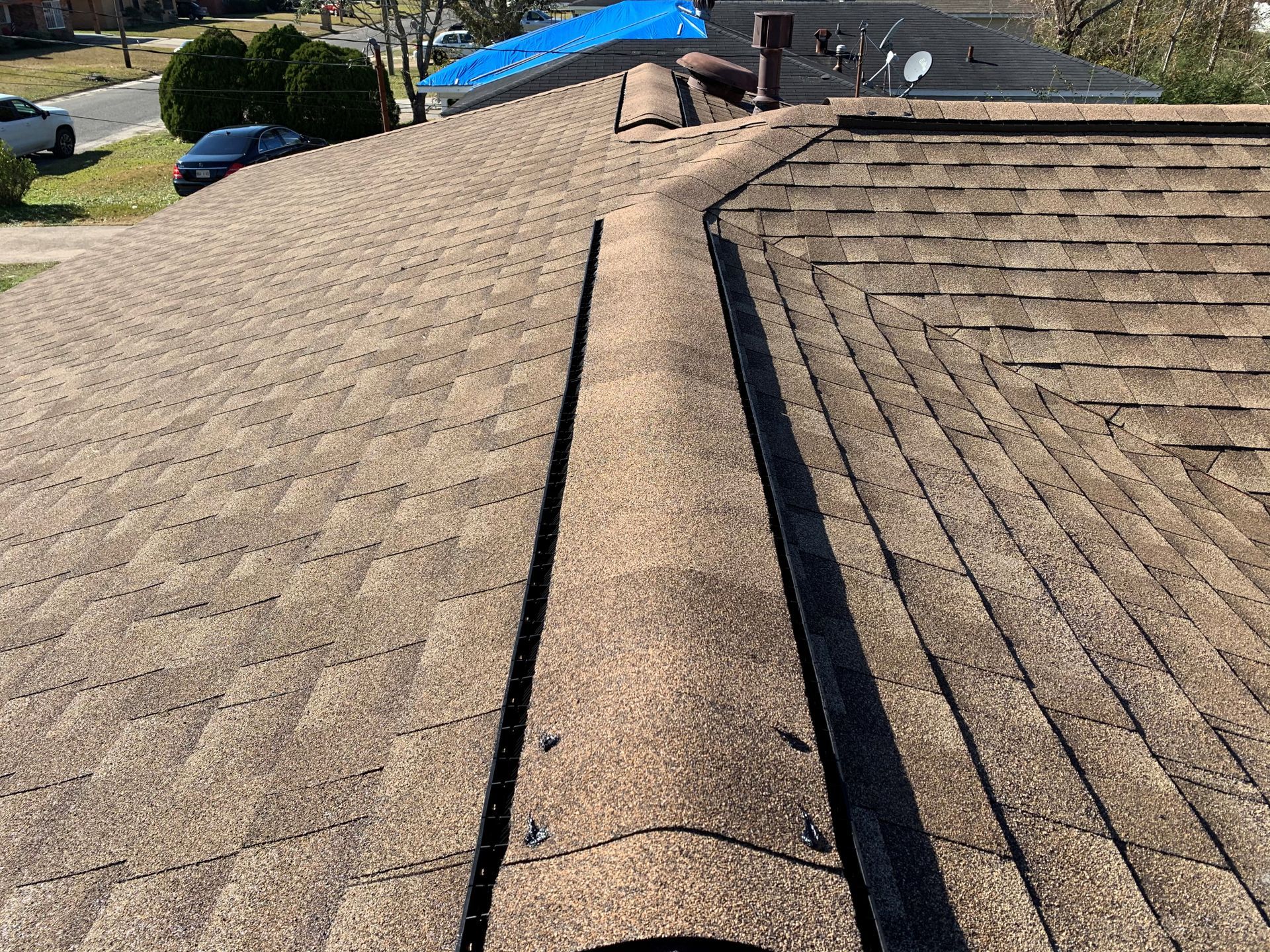Trying to Spot Repair Vinyl Siding in Northern Kentucky? Read This First!

Vinyl siding is a popular choice for homeowners due to its durability, low maintenance requirements, and aesthetic appeal. However, like any exterior material, vinyl siding is susceptible to damage from severe weather conditions such as storms.
When faced with storm damage, homeowners are often left with the decision to repair or replace their vinyl siding.
In this quick resource, we'll explore the types of storm damage to vinyl siding, common long-term issues, the repair process, replacement options, and the benefits of each.
Types of Storm Damage to Vinyl Siding:
Storms can wreak havoc on vinyl siding, causing various types of damage. Some common forms of storm damage to vinyl siding include:
- Impact Damage: High winds can propel debris such as branches, rocks, or other objects, causing dents, cracks, or holes in the siding.
- Hail Damage: Hailstorms can result in dents or punctures on the surface of the siding, compromising its integrity and aesthetic appeal.
- Water Damage: Heavy rain, flooding, or leaks can lead to moisture infiltration behind the siding, causing mold, mildew, or rot.
- Wind Damage: Strong winds can loosen or dislodge vinyl siding panels, exposing the underlying structure to further damage.
Common Long-Term Issues with Vinyl Siding:
While vinyl siding is known for its durability, it can still develop long-term issues over time. Some common long-term issues with vinyl siding include:
- Fading & UV Damage: Exposure to sunlight and weathering can cause vinyl siding colors to fade over time, resulting in an uneven appearance. Dark colors tend to fade the worst.
- Warping: Extreme temperature fluctuations can cause vinyl siding panels to warp or buckle, especially if not nailed properly, compromising their structural integrity and the appearance of the vinyl siding.
- Cracking: Over time with prolonged exposure to the sun, vinyl siding becomes rather brittle as it loses it's flexible properties. This age-related deterioration or impact damage can lead to cracks or fractures in vinyl siding panels, allowing moisture to get in behind the siding- which causes a bunch of other issues.
- Mold and Mildew: Moisture retention behind vinyl siding can create an ideal environment for mold and mildew growth because its warm, humid, and dark. Mold and mildew growth can pose significant health risks and aesthetic concerns.
The Repair of Vinyl Siding:
When faced with localized damage to vinyl siding, repair may seem like a cost-effective solution. However, repairing vinyl siding comes with its challenges and limitations. Common repair techniques for vinyl siding include:
- Patch Repair: Small holes or cracks in vinyl siding panels can be patched using specialized vinyl siding repair kits or sealants.
- Replacement of Damaged Panels: Severely damaged or dislodged vinyl siding panels may need to be replaced entirely to restore the integrity of the exterior.
However, repairing vinyl siding is often only a temporary solution due to several factors:
- Color Matching Issues: Finding an exact color match for existing vinyl siding can be challenging, resulting in noticeable discrepancies in appearance.
- Broken Nail Hems: Repairing vinyl siding may require removing and reinstalling adjacent panels, potentially causing damage to the nail hems and compromising the siding's stability.
- Underlying Damage: Surface-level repairs may not address underlying issues such as water damage or structural concerns, leading to recurring problems in the future.
The Replacement of Vinyl Siding:
In cases of extensive storm damage or long-term deterioration, replacing vinyl siding may be the most viable option. Vinyl siding replacement involves removing the existing siding and installing new panels to ensure a uniform and durable exterior.
Some benefits of vinyl siding replacement include:
- Comprehensive Solution: Replacement allows for the complete overhaul of the exterior, addressing all forms of damage and enhancing curb appeal.
- Long-Term Durability: New vinyl siding offers improved durability, resistance to weathering, and longevity compared to older, damaged panels.
- Customization Options: Homeowners can choose from a wide range of colors, styles, and textures to achieve their desired aesthetic preferences.
- Addressing Underlying Issues: Replacement provides an opportunity to inspect and address any underlying issues such as moisture damage or structural concerns, ensuring the long-term integrity of the exterior.
When faced with storm damage or long-term deterioration of vinyl siding, homeowners must carefully weigh the options of repair versus replacement. While repair may offer a temporary solution for localized damage, replacement provides a comprehensive and long-term solution to restore the integrity and aesthetic appeal of the exterior. Consulting with a professional contractor can help homeowners make an informed decision based on the extent of damage, budget, and long-term goals. Many contractors who specialize in siding also offer roofing services, making it easy to address multiple exterior issues at once. Remember, while repairing vinyl siding may seem like a quick fix, it's essential to consider the limitations and potential challenges that may arise in the future.




